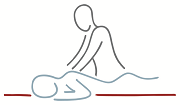What is a Mastectomy?
A Mastectomy is the medical name for the surgical removal of one or both breasts. It is usually performed as a treatment or preventative measure for breast cancer in both women and men. A Mastectomy is often recommended when the tumour is large or there are multiple tumours throughout the breast. During this operation, some of your lymph nodes can be removed and checked to see if the cancer has spread. Different treatment options are available after the Mastectomy depending on the outcome of these checks. These additional treatments may include a course of Chemotherapy or Radiotherapy to make sure that all the cancer cells are killed off.
When a Mastectomy is planned, your medical team will discuss it’s physical and mental impacts with you. Some people may want their breast(s) to be re-constructed after the operation. This procedure can be done immediately after the removal of the original breast or during a second operation. After surgery, you will need to stay in hospital for a few days depending on how you feel and the extent of the surgery. A Mastectomy and any subsequent reconstruction surgery are major operations and you will be more tired than usual for a few weeks afterwards. Your arm strength and the range of movement in your shoulder will also be affected. You will be given an exercise routine by the hospital Physiotherapist to help regain this strength and flexibility.
Reconstruction –
For a Breast reconstruction after treatment for cancer, the new breast(s) can be constructed using artificial implants or tissue from your back, abdomen or thigh. If your own tissue is being used, blood vessels will also be transferred to keep the tissue alive in its’ new home. Microsurgery is used to connect the new tissue in place and in the vast majority of cases this procedure results in a very satisfactory repair. If you choose artificial implants, they will need to be replaced after a given time so more surgeries may be required in the future. You will be able to discuss all options with your medical team before choosing what is best for your situation.
How can I help?
After these surgeries, there will be extensive scarring in the breast area as well as the donor site. Care should be taken to mobilise these scars as soon as they are healed using gentle self-massage and stretching. Massage can help to keep the scar supple and flexible. If you use an unperfumed lotion it can also help to keep the site moist and reduce itching. If your wounds are taking a long time to heal or you are concerned about the impact of the scars then, please, discuss with your medical team. Scars can take up to two years to fully form and mature so, even after you are discharged from the surgeon’s care, you can continue to improve the function of the scar tissue using specialist Scarwork™ therapy combined with your stretching exercises.
If you have any questions about how I may be able to help, please don’t hesitate to get in touch for a no-obligation chat.

